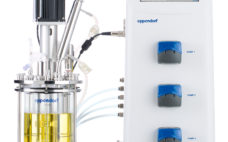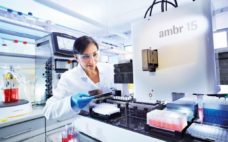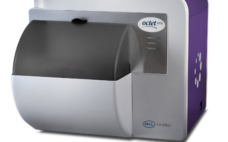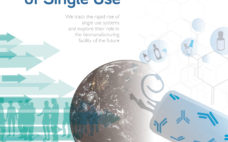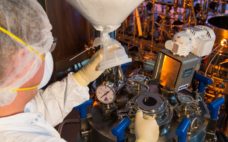JSR Life Sciences (JLS) announced today that JSR Corporation has agreed to acquire Selexis SA, a pioneering life sciences company and global leader in mammalian (suspension-adapted CHO-K1) cell-line generation technologies. Once completed, this transaction will mark the second major biotechnology addition to the JSR group of companies following JSR Corporation’s acquisition of KBI Biopharma in 2015. Selexis will be integrated within KBI Biopharma’s operations to create the most robust and fastest “Gene to GMP” service offering in the biopharmaceutical industry.…
Author Archives: BPI Contributor
Rentschler Biotechnologie and Rentschler Fill Solutions Announce Strategic Partnership for One-Stop Solutions with New State-of-the-Art Fill and Finish Facilities
Rentschler Biotechnologie GmbH, a leading contract development and manufacturing organization (CDMO) for biopharmaceuticals, and Rentschler Fill Solutions GmbH, an independent specialist for aseptic fill and finish services, today announced a strategic partnership to provide new state-of-the-art fill and finish facilities and one-stop solutions for biopharmaceutical products to meet the needs of Rentschler Biotechnologie’s clients. Under the terms of the agreement, Rentschler Fill Solutions will prospectively serve as the exclusive partner for the fill and finish services of Rentschler Biotechnologie’s manufacturing…
Eppendorf Introduces the New BioFlo® 120 Bioprocess Control Station
Leading life science company Eppendorf introduces the BioFlo 120, their latest bench scale fermentor/bioreactor system for research and development. This flexible instrument is capable of microbial fermentation as well as mammalian cell culture applications with a single platform. It features an extensive range of glass and BioBLU® Single-Use Vessel options (250 mL – 40 L). Universal connections for digital Mettler Toledo® ISM and analog sensors make it easy to monitor a variety of critical process parameters. “We know that in…
Sartorius Stedim Biotech Launches ambr® 15 Bioreactor System with Nova BioProfile® FLEX2 Integration
Sartorius Stedim Biotech (SSB), a leading international supplier for the biopharmaceutical industry, announced that the ambr® 15 automated micro bioreactor system combined with a Nova Biomedical (Nova) BioProfile® FLEX2 automated cell culture analyzer is on show for the first time at the Cell Line Development & Engineering Conference in San Diego, California. This newly integrated system, which is a first from SSB and Nova’s successful collaboration, enables rapid at-line sample collection and analysis of massive quantities of key cell culture…
Vetter and Microdermics Enter into a Strategic Cooperation Agreement to Develop Innovative Microneedle Drug Delivery Systems
Vetter, a leading and innovative provider of aseptic prefilled drug delivery systems and Microdermics Inc., a Vancouver-based medical device company developing a novel hollow, metal microneedle drug and vaccine delivery system, today announced that they have entered into a strategic cooperation agreement. The market in novel alternatives to needle injections is forecasted to grow rapidly, reaching in excess of 480 million units by 2030 (Roots Analysis report). Microneedles are a novel technology that can offer promising advantages as an alternative…
Lonza Acquires Cell and Gene Contract Manufacturer PharmaCell
On 3 May 2017, Lonza successfully completed the acquisition of PharmaCell B.V., one of the most-respected cell and gene contract manufacturers in Europe with employees in Maastricht and Geleen (NL). In 2016 PharmaCell had sales of EUR 11 million. PharmaCell was primarily selected due to its core expertise in autologous cell and gene therapy manufacturing, which includes experience with two commercial Advanced Therapy Medicinal Products (ATMPs)-licensed products. Autologous therapies use a patient’s own cells. “PharmaCell’s position in the market complements…
Accelerating the Biotech Value Chain Through the Implementation of High-Throughput Technologies
This webcast features: Fredrik Nilsson, Director of Downstream Development, and Jesper Worm, PhD, Scientist, Department of Analytical Development, at CMC Biologics. In this webinar, the speakers discuss and analyze the use of high-throughput technologies to optimize timelines and deliver value within the upstream and downstream development processes, using Octet HTX platform technology. Over the past year, the experts at CMC Biologics have used this technology to deliver a significant number of titer data points, and residual protein data measurements. This…
Quantum Redefines Peristaltic Pump Performance for Single-Use Downstream Bioprocessing
Watson-Marlow Fluid Technology Group (WMFTG) has unveiled its innovative Quantum peristaltic pump with patented ReNu single-use (SU) cartridge technology. Engineered by the world leader in peristaltic innovation, Quantum sets the new standard for high-pressure feed pumps in SU tangential flow filtration (TFF), virus filtration (VF) and high-performance liquid chromatography (HPLC). Quantum represents a step-change in pump technology for bioprocessing by enabling higher downstream process yields throughout the pressure range, delivering virtually pulse free linear flow, lowest shear and easy validation…
Globalization of Single-Use and an Introduction to the Mobius® MyWay Portfolio
Single-use systems have enjoyed a meteoric rise in recent years and are fast becoming the go-to option for all but the biggest batches in the biopharma industry. But how do you get the most out of these exciting systems? Here, experts track the rapid evolution of single use systems, their impact on the industry and biomanufacturing, and how they will transform future manufacturing operations. Single-use is now becoming well established into an “age of optimization.” More than 90% of biopharma…
Single-Use Powder Containment for Biopharmaceutical Manufacturing
For many years, media and buffer ingredients used in powder form were transferred from stock containers using open scoops, weighed and mixed in buckets or open-top bags, and then carried in and dumped from those buckets or open-top bags directly into production vessels—based on the premise that sterility wasn’t required at that early stage of manufacturing. While much of this process was often carried out in a separate room from the production line to contain airborne contaminants, final transfer to…

